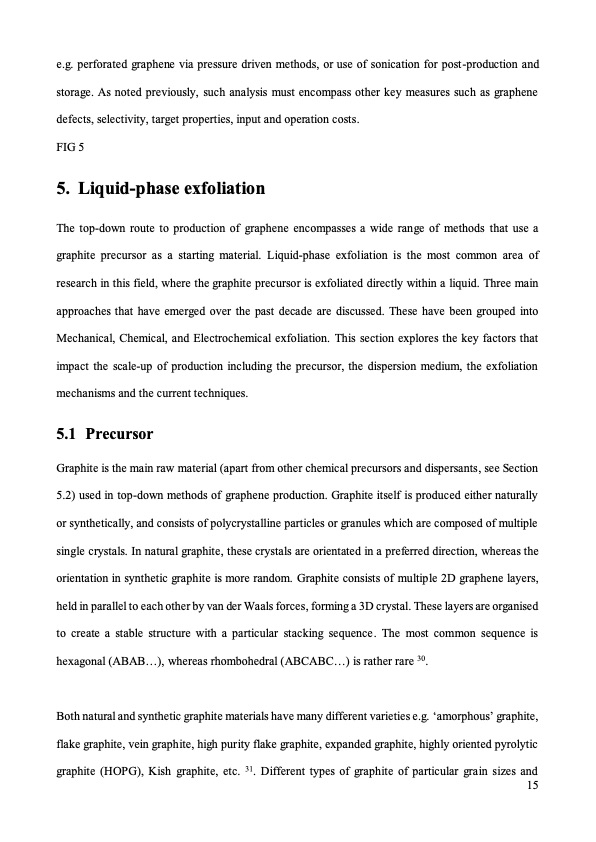PDF Publication Title:
Text from PDF Page: 015
e.g. perforated graphene via pressure driven methods, or use of sonication for post-production and storage. As noted previously, such analysis must encompass other key measures such as graphene defects, selectivity, target properties, input and operation costs. FIG 5 5. Liquid-phase exfoliation The top-down route to production of graphene encompasses a wide range of methods that use a graphite precursor as a starting material. Liquid-phase exfoliation is the most common area of research in this field, where the graphite precursor is exfoliated directly within a liquid. Three main approaches that have emerged over the past decade are discussed. These have been grouped into Mechanical, Chemical, and Electrochemical exfoliation. This section explores the key factors that impact the scale-up of production including the precursor, the dispersion medium, the exfoliation mechanisms and the current techniques. 5.1 Precursor Graphite is the main raw material (apart from other chemical precursors and dispersants, see Section 5.2) used in top-down methods of graphene production. Graphite itself is produced either naturally or synthetically, and consists of polycrystalline particles or granules which are composed of multiple single crystals. In natural graphite, these crystals are orientated in a preferred direction, whereas the orientation in synthetic graphite is more random. Graphite consists of multiple 2D graphene layers, held in parallel to each other by van der Waals forces, forming a 3D crystal. These layers are organised to create a stable structure with a particular stacking sequence. The most common sequence is hexagonal (ABAB...), whereas rhombohedral (ABCABC...) is rather rare 30. Both natural and synthetic graphite materials have many different varieties e.g. ‘amorphous’ graphite, flake graphite, vein graphite, high purity flake graphite, expanded graphite, highly oriented pyrolytic graphite (HOPG), Kish graphite, etc. 31. Different types of graphite of particular grain sizes and 15PDF Image | graphene production via nonoxidizing liquid exfoliation

PDF Search Title:
graphene production via nonoxidizing liquid exfoliationOriginal File Name Searched:
Graphene-R2-review.pdfDIY PDF Search: Google It | Yahoo | Bing
Salgenx Redox Flow Battery Technology: Power up your energy storage game with Salgenx Salt Water Battery. With its advanced technology, the flow battery provides reliable, scalable, and sustainable energy storage for utility-scale projects. Upgrade to a Salgenx flow battery today and take control of your energy future.
CONTACT TEL: 608-238-6001 Email: greg@infinityturbine.com (Standard Web Page)